Effect of Multiple Factors on Identification and Diagnosis of Skidding Damage in Rolling Bearings under Time-Varying Slip Conditions
Abstract
1. Introduction
2. Fault Signal Characteristics of Test Rig
2.1. Test Rig and Test Conditions
2.1.1. Control System
2.1.2. Test System
2.1.3. Loading System
2.1.4. Lubrication System
2.2. Acquisition of Abnormal Vibration Fault Signals Based on FFT and DWT
2.2.1. Fast Fourier Transform (FFT)
2.2.2. Discrete Wavelet Transform (DWT)
3. Results and Discussion
3.1. Relationship between Radial Load and Skidding Damage
3.2. Relationship between Temperature Distribution and Skidding Damage
3.3. Relationship between Slip Rate and Skidding Damage
4. Conclusions
Author Contributions
Funding
Acknowledgments
Conflicts of Interest
Abbreviations
| FFT | Fast Fourier Transform |
| DWT | Discrete Wavelet Transform |
| AMED | Adaptive Minimum Entropy Deconvolution |
| TFMSR | Time-Delayed Feedback Monostable Stochastic Resonance |
| CEEMDAN | Complete Ensemble Empirical Mode Decomposition with Adaptive Noise |
| MPE | Multi-Scale Permutation Entropy |
| SVM | Support Vector Machine |
| DFT | Discrete Fourier Transform |
| x(n) | Finite-length sequence of length N |
| X(k) | N-point DFT sequence |
| fa | Rotational frequency of the axis of rotation |
| fs | Rotational frequency of the inner ring |
| fo | Rotational frequency of the outer ring |
| α | Mounted contact angle |
| d | Roller diameter |
| D | Bearing pitch diameter |
| Z | Number of rollers |
| a | Scale factor |
| b | Displacement factor |
| ng | Roller speed |
| nn | Inner ring |
| Dn | Outside diameter of the inner ring |
References
- Boudiaf, A.; Djebala, A.; Bendjma, H.; Balaska, A.; Dahane, A. A summary of vibration analysis techniques for fault detection and diagnosis in bearing. In Proceedings of the International Conference on Modelling, Algiers, Algeria, 15–17 November 2016. [Google Scholar]
- Su, X. Research on Fault Feature Extraction Method of Rolling Bearing; Northeast Petroleum University: Daqing, China, 2018. [Google Scholar]
- Li, J.; Chen, W. Skidding analysis of high-speed and light-load roller bearing based on modified film thickness formula and considering bearing whirl with elliptical orbit. J. Balk. Tribol. Assoc. 2016, 22, 2690–2705. [Google Scholar]
- Li, J.; Chen, W.; Xie, Y. Experimental study on skid damage of cylindrical roller bearing considering thermal effect. Proc. Inst. Mech. Eng. Part J J. Eng. Tribol. 2015, 228, 1036–1046. [Google Scholar] [CrossRef]
- Shao, Y.; Tu, W.; Chen, Z.; Xie, Z.; Song, B. Investigation on Skidding of Rolling Element Bearing in Loaded Zone. J. Harbin Inst. Technol. New Ser. 2013, 20, 34–41. [Google Scholar]
- Rezaei Rad, A.; Banazadeh, M. Probabilistic Risk-Based Performance Evaluation of Seismically Base-Isolated Steel Structures Subjected to Far-Field Earthquakes. Buildings 2018, 8, 128. [Google Scholar] [CrossRef]
- Nandi, S.; Toliyat, H.A.; Li, X. Condition monitoring and fault diagnosis of electrical motors—A review. IEEE Trans. Energy Convers. 2005, 20, 719–729. [Google Scholar] [CrossRef]
- Liu, Z. Research and System Development of Rolling Bearing Fault Diagnosis; Nanchang Hangkong University: Nanchang, China, 2018. [Google Scholar]
- Boudiaf, A.; Moussaoui, A.; Dahane, A.; Atoui, I. A Comparative Study of Various Methods of Bearing Faults Diagnosis Using the Case Western Reserve University Data. J. Fail. Anal. Prev. 2016, 16, 271–284. [Google Scholar] [CrossRef]
- Li, J.; Li, M.; Zhang, J. Rolling bearing fault diagnosis based on time-delayed feedback monostable stochastic resonance and adaptive minimum entropy deconvolution. J. Sound Vib. 2017, 401, 139–151. [Google Scholar] [CrossRef]
- Lin, H.; Ye, Y. Reviews of bearing vibration measurement using fast Fourier transform and enhanced fast Fourier transform algorithms. Adv. Mech. Eng. 2019, 11, 1–12. [Google Scholar] [CrossRef]
- Safizadeh, M.S.; Latifi, S.K. Using multi-sensor data fusion for vibration fault diagnosis of rolling element bearings by accelerometer and load cell. Inf. Fusion 2014, 18, 1–8. [Google Scholar] [CrossRef]
- Zhang, Z.; Wang, Y.; Wang, K. Fault diagnosis and prognosis using wavelet packet decomposition, Fourier transform and artificial neural network. J. Intell. Manuf. 2013, 24, 1213–1227. [Google Scholar] [CrossRef]
- Duan, Z.; Wu, T.; Guo, S.; Shao, T.; Malekian, R.; Li, Z. Development and trend of condition monitoring and fault diagnosis of multi-sensors information fusion for rolling bearings: A review. Int. J. Adv. Manuf. Technol. 2018, 96, 803–819. [Google Scholar] [CrossRef]
- Zhang, X. Research on Fault Diagnosis Method for Roller Element Bearing Based on Vibration Signal; North China Electric Power University: Baoding, China, 2016. [Google Scholar]
- Zheng, X. Feature Extraction and Fault Classification Methods Based on Discrete Wavelet Transform; Beijing University of Chemical Technology: Beijing, China, 2017. [Google Scholar]
- Zheng, B. Development and Application of Bearing Fault Diagnosis System Based on Wavelet Analysis; Beijing Jiaotong University: Beijing, China, 2018. [Google Scholar]
- Saxena, V.; Chowdhury, N.; Devendiran, S. Assessment of Gearbox Fault Detction Using Vibration Signal Analysis and Acoustic Emission Technique. J. Mech. Civ. Eng. 2013, 7, 52–60. [Google Scholar]
- Aherwar, A.; Saifullah Khalid, M. Vibration analysis techniques for gearbox Diagnostic: A review. Int. J. Adv. Eng. Technol. 2012, 3, 4–12. [Google Scholar]
- Karacay, T.; Akturk, N. Experimental diagnostics of ball bearings using statistical and spectral methods. Tribol. Int. 2009, 42, 836–843. [Google Scholar] [CrossRef]
- Bhende, A.; Awari, G.; Untawale, S. Assessment of Bearing Fault Detection Using Vibration Signal Analysis. J. Mech. Civ. Eng. 2011, 2, 249–261. [Google Scholar]
- Chaurasiya, H. Recent Trends of Measurement and Development of Vibration Sensors. Int. J. Comput. Sci. 2012, 9, 353–358. [Google Scholar]
- Yang, M.; Zhang, Z.; Sun, H.; Zhang, Y. The comparison of wavelet and fourier analysis and their application to fault diagnosis. China Meas. Technol. 2005, 31, 58–61. [Google Scholar]
- Bordeianu, C.; Landau, R.; Paez, M. Wavelet analyses and applications. Cent. Eur. J. Phys. 2009, 30, 1049–1062. [Google Scholar] [CrossRef]
- Li, J.; Chen, W.; Zhang, L.; Wang, T. An Improved Quasi-Dynamic Analytical Method to Predict Skidding in Roller Bearings under Conditions of Extremely Light Loads and Whirling. Stroj. Vestn. J. Mech. Eng. 2016, 62, 86–94. [Google Scholar] [CrossRef]
- Li, J.; Xue, J.; Ma, Z. Study on the Thermal Distribution Characteristics of High-Speed and Light-Load Rolling Bearing Considering Skidding. Appl. Sci. 2018, 8, 1593. [Google Scholar] [CrossRef]
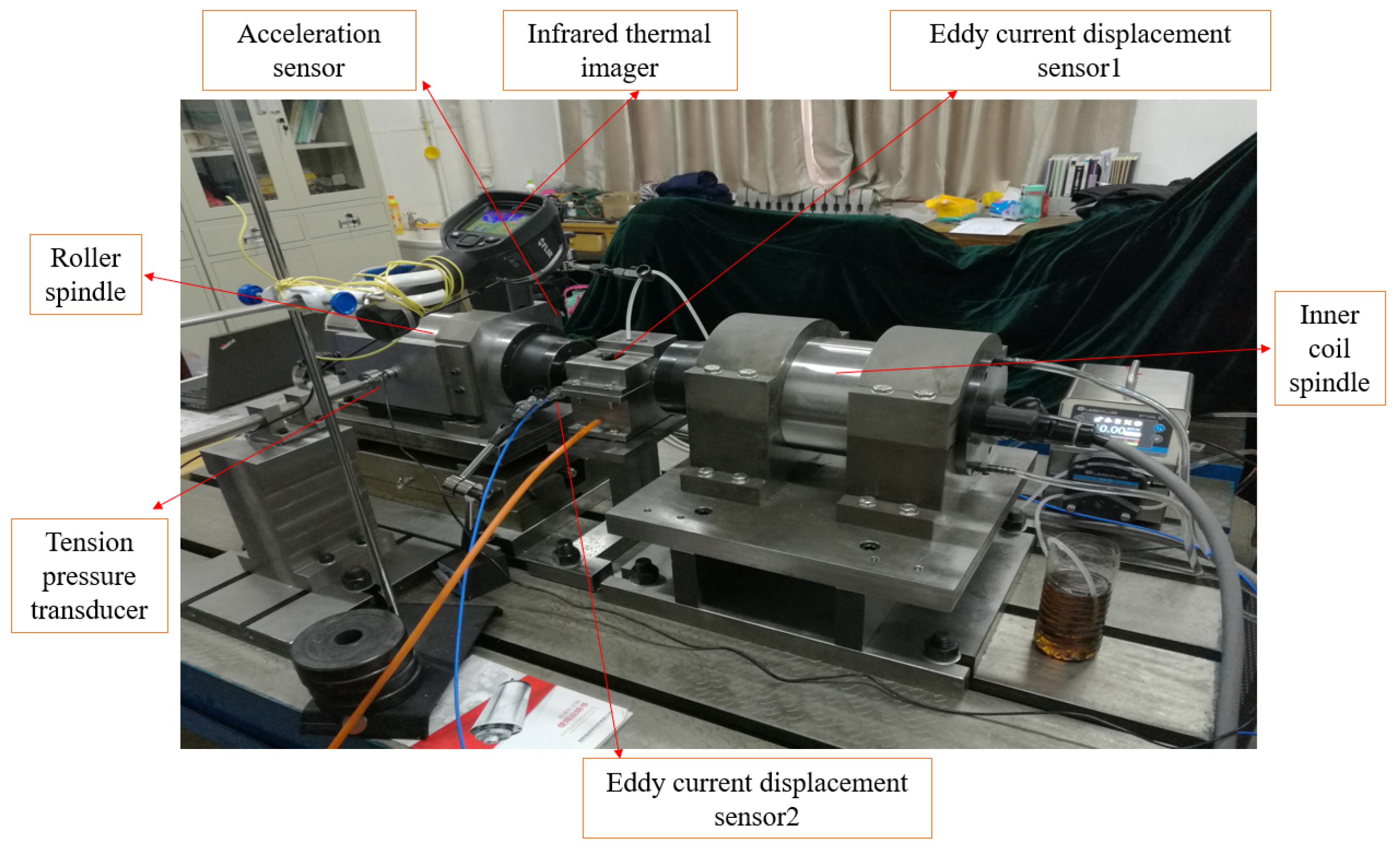




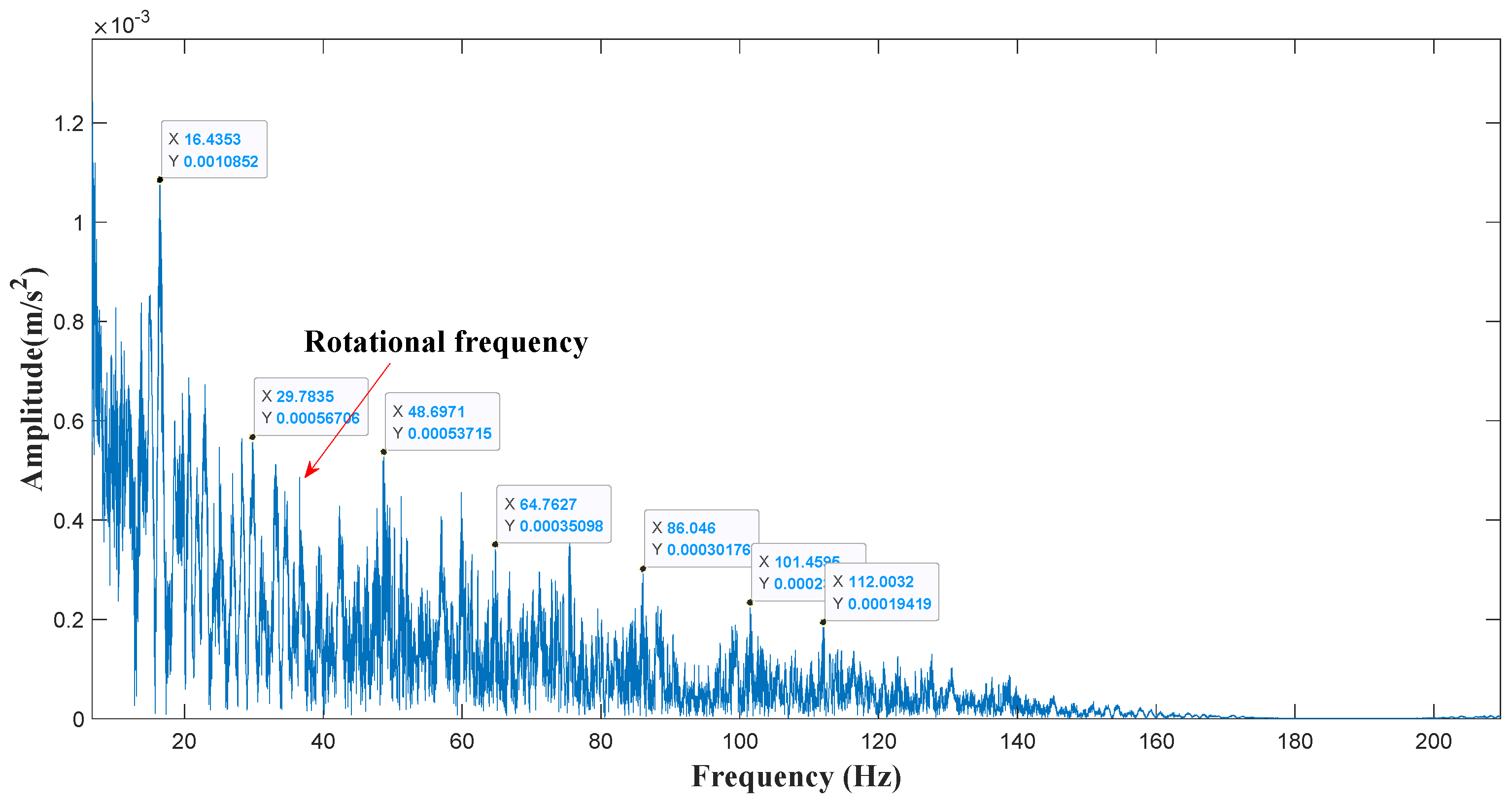
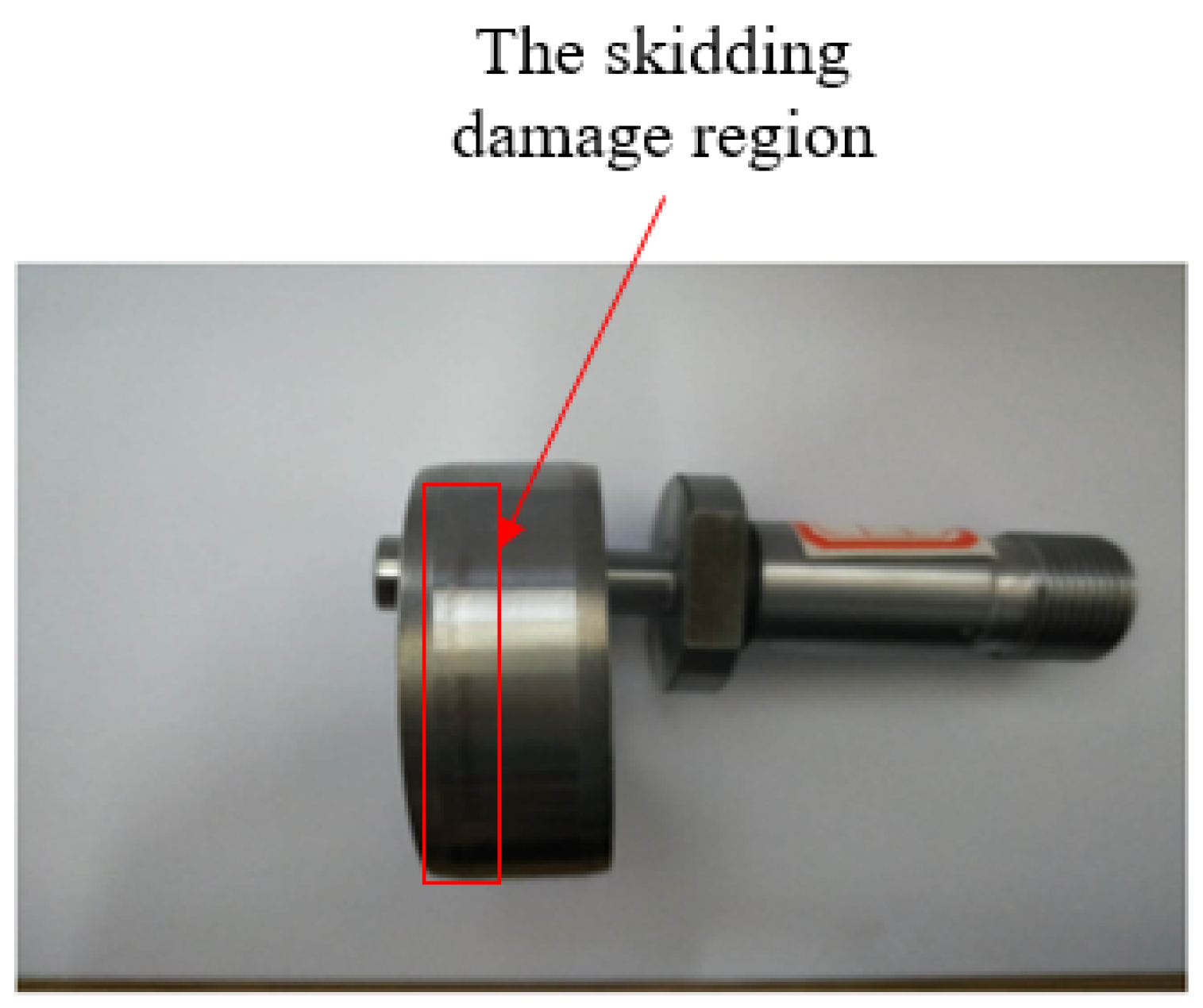

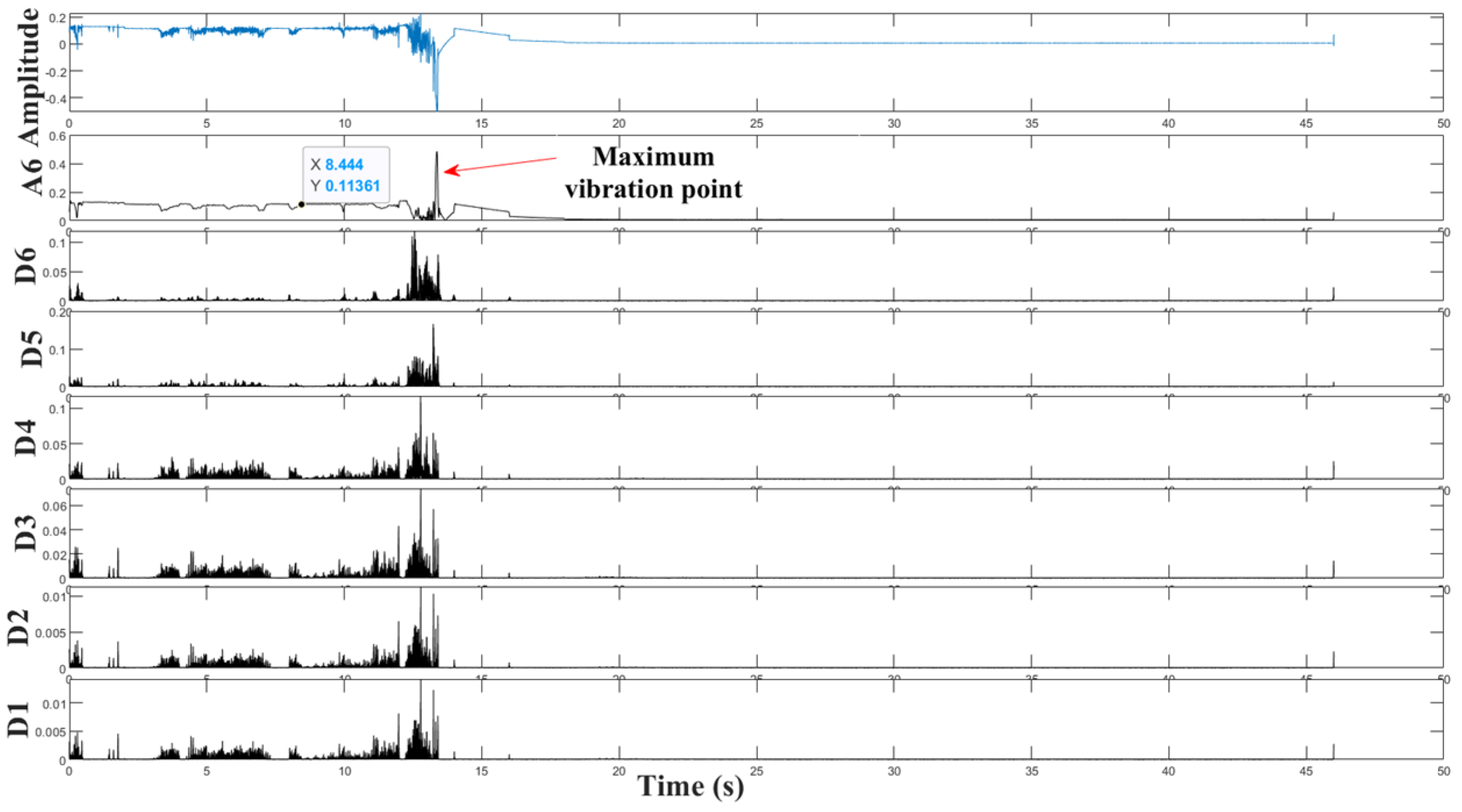

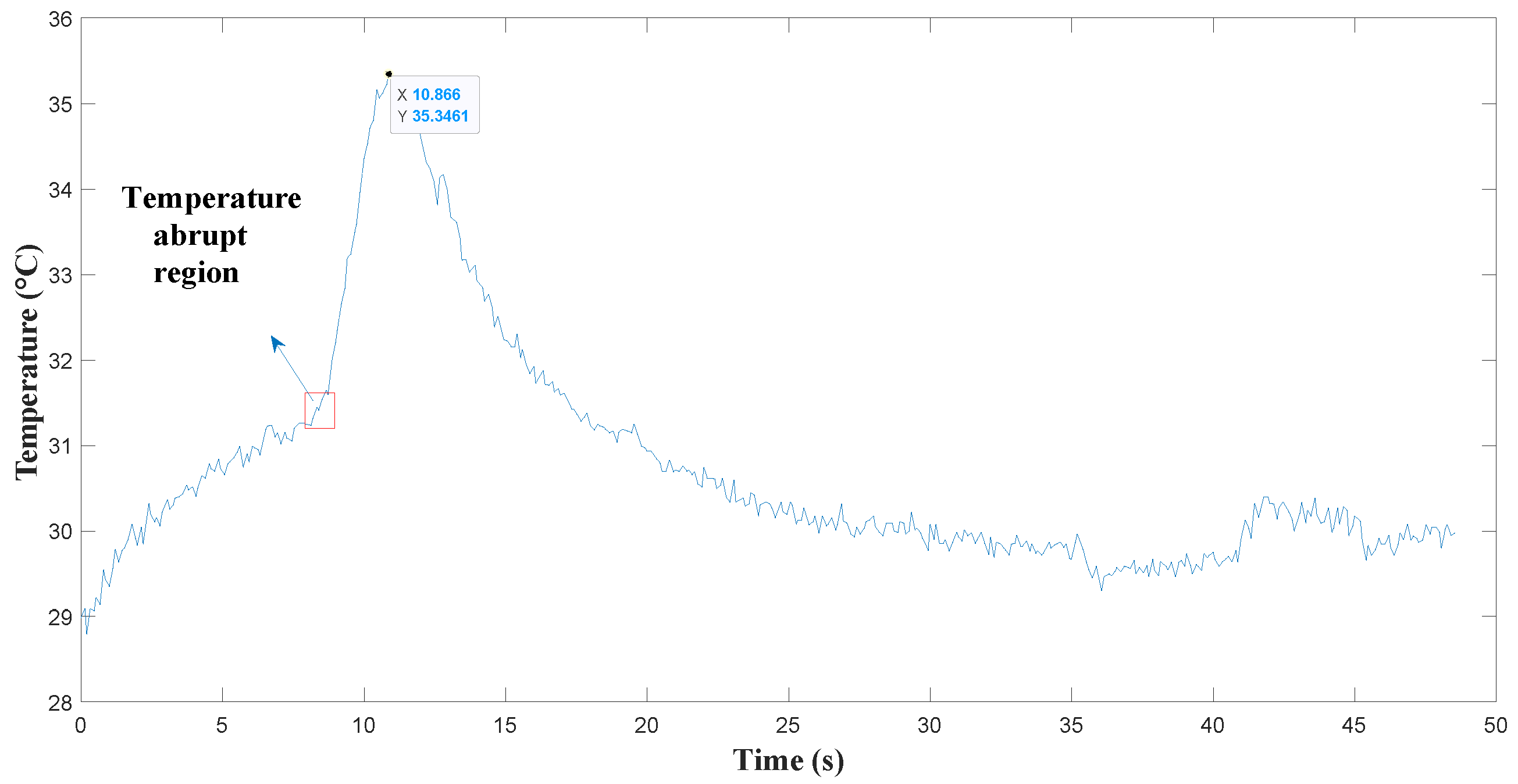
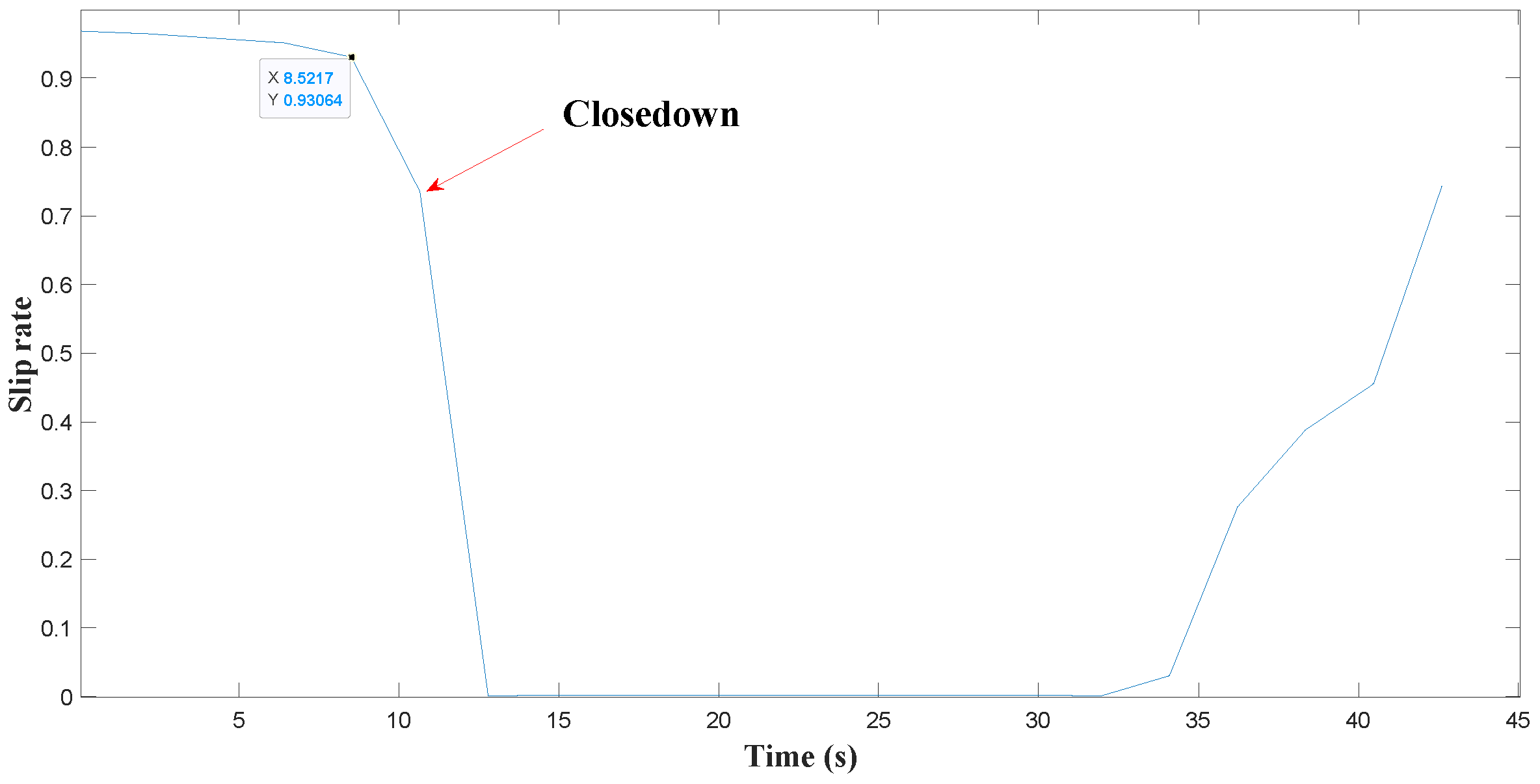
© 2019 by the authors. Licensee MDPI, Basel, Switzerland. This article is an open access article distributed under the terms and conditions of the Creative Commons Attribution (CC BY) license (http://creativecommons.org/licenses/by/4.0/).
Share and Cite
Li, J.; Chen, W.; Xue, J.; Han, K.; Wang, Q. Effect of Multiple Factors on Identification and Diagnosis of Skidding Damage in Rolling Bearings under Time-Varying Slip Conditions. Appl. Sci. 2019, 9, 3033. https://doi.org/10.3390/app9153033
Li J, Chen W, Xue J, Han K, Wang Q. Effect of Multiple Factors on Identification and Diagnosis of Skidding Damage in Rolling Bearings under Time-Varying Slip Conditions. Applied Sciences. 2019; 9(15):3033. https://doi.org/10.3390/app9153033
Chicago/Turabian StyleLi, Junning, Wuge Chen, Jiafan Xue, Ka Han, and Qian Wang. 2019. "Effect of Multiple Factors on Identification and Diagnosis of Skidding Damage in Rolling Bearings under Time-Varying Slip Conditions" Applied Sciences 9, no. 15: 3033. https://doi.org/10.3390/app9153033
APA StyleLi, J., Chen, W., Xue, J., Han, K., & Wang, Q. (2019). Effect of Multiple Factors on Identification and Diagnosis of Skidding Damage in Rolling Bearings under Time-Varying Slip Conditions. Applied Sciences, 9(15), 3033. https://doi.org/10.3390/app9153033



